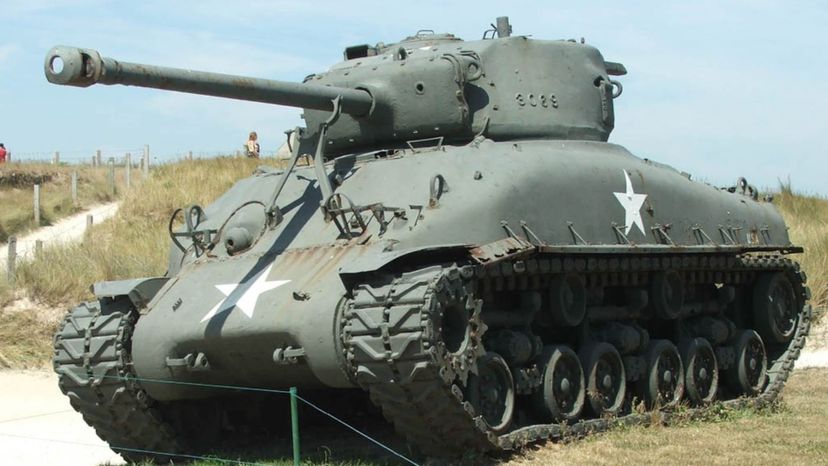
About This Quiz
Fall in! Here is a look back at the military equipment which helped to make WWII the war to end all wars
It is a known fact that soldiers win wars, but what is also true is that they rely heavily on the equipment they have to help them do it. At the beginning of WWII, much of that equipment was brand-new tech which had been developed by both sides in the interwar years. As the war progressed, the Allied and Axis countries worked feverishly to stay one step ahead of each other while keeping their defenses up and hammering away at the enemy with offensive tactics.
All sorts of equipment featured prominently in WWII. Navigation devices, personal protection gear and a wide assortment of vehicles also played their part. It was firepower, however, which took center stage. From pistols, rifles and submachine guns to howitzers, anti-tank guns and missiles, the variety of weaponry was astounding. What would be even more astounding, however, is working through the quiz and being able to identify them. If you think you are up to the challenge, then it's time to proceed to battle stations as you duke it out with this quiz!
WWII history buffs will definitely overpower this quiz - but how will you do? Charge right in and find out!
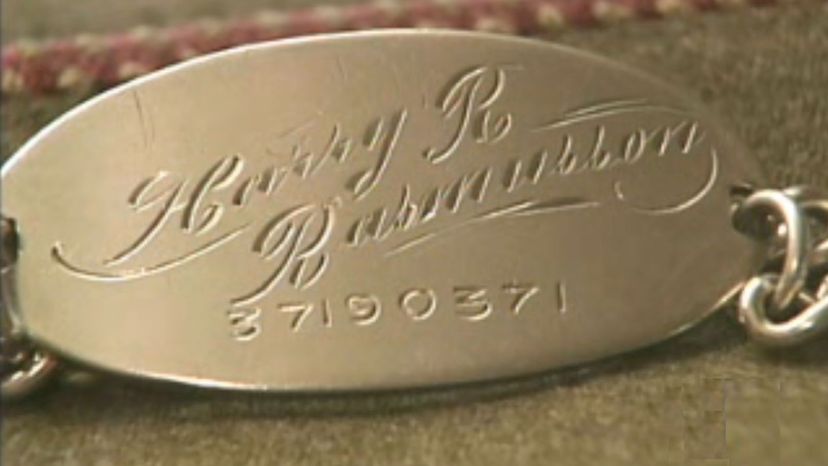
The I.D bracelets issued to servicemen and women in WWII were not all the same – some carried more detailed information than others. At a minimum, most were inscribed with the soldier’s name, rank and serial number, as well as his or her blood type.
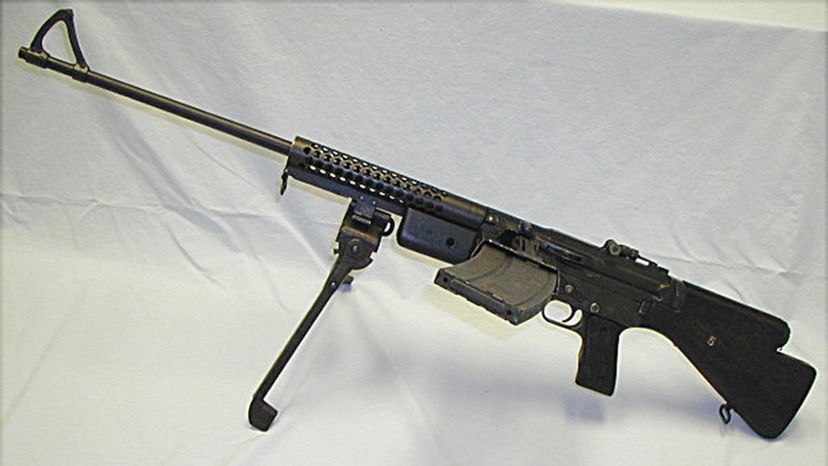
The M1941 Johnson machine gun was described as a light machine gun and typically written as the Johnson M1941 LMG. It is named after its designer, United States Marine Corps (USMC) reservist Melvin Johnson, Jr. who held the rank of captain. The Johnson M1941 LMG is often referred to simply as the Johnson or by its nickname, the Johnny gun.
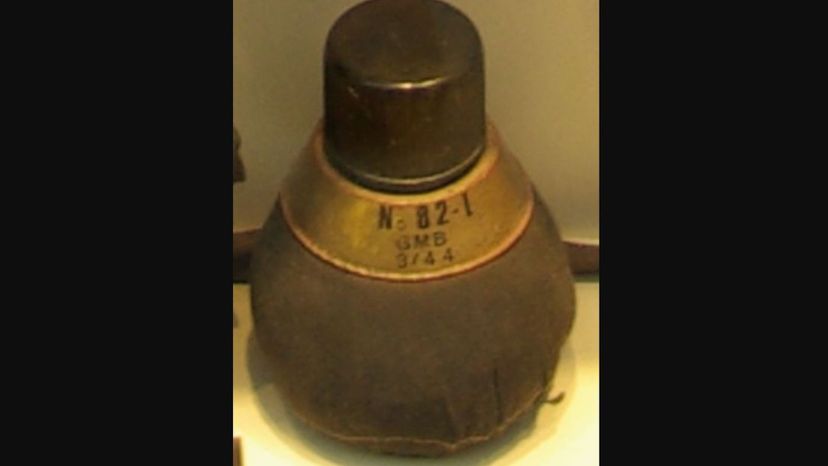
The Gammon bomb (more formally known as the Number 82 grenade) was designed by a member of the British Parachute Regiment. It was put to extensive use by Allied paratroopers, including American paratroopers who took part in D-Day activities. Users were pleased with how easy it was to customize the Gammon bomb to suit the intended target.
Advertisement
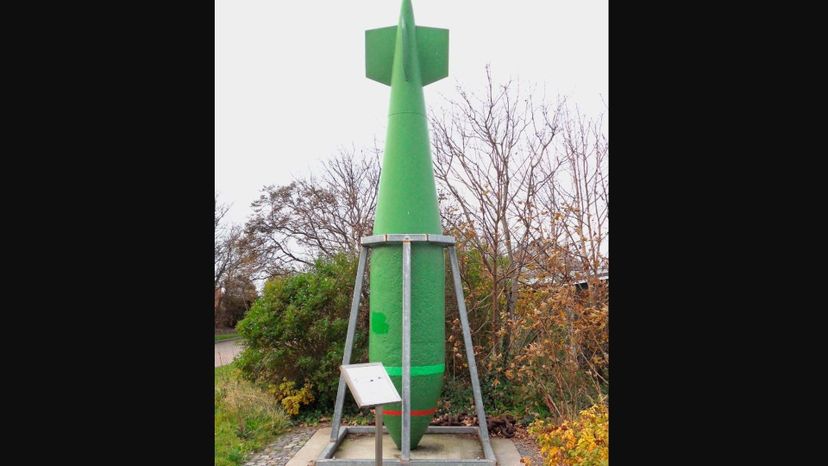
Barnes Wallis, a British aeronautical engineer, first developed earthquake bombs, such as Tallboy and Grand Slam in 1941. The British Royal Air Force successfully used Tallboy earthquake bombs on several occasions. These include the sinking of the Tirpitz, a German Bismarck-class battleship off the northern Norwegian coast.
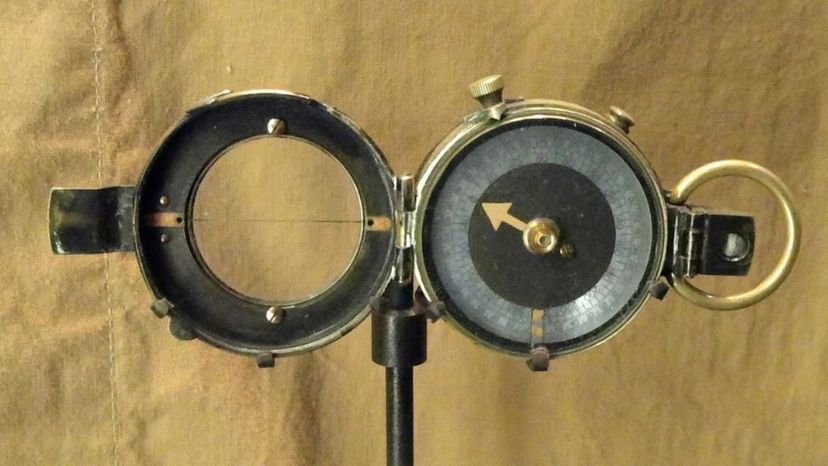
American paratroopers who took part in D-Day operations were issued larger and more accurate versions of the liquid-filled wrist compasses than were given to other troops. The compasses were worn on the wrist; over the sleeve higher up on the arm; attached to the shoulder loops of the uniform; or at the ankle over a jump boot.

British Capt. William E. Fairbairn designed the Smatchet during WWII and it was put to use by both British and American troops. It is a combat knife with an 11-inch blade which is designed with a dull matte finish to make it undetectable during night attacks.
Advertisement
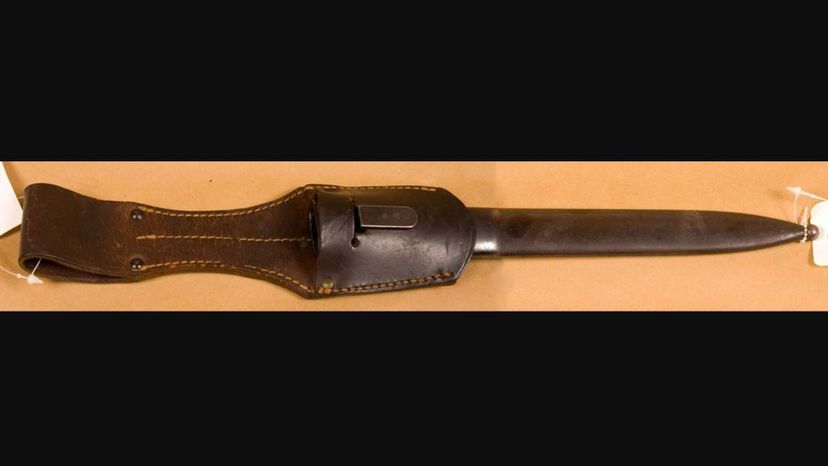
The M3 scabbard was designed soon after the start of WWII as a sheath for the M1 bayonet. Materials used in previous scabbards issued for the M1 bayonet included wood, leather, canvas and rawhide. The new M3 scabbard’s sheath was fiberglass and its throat was made of metal.
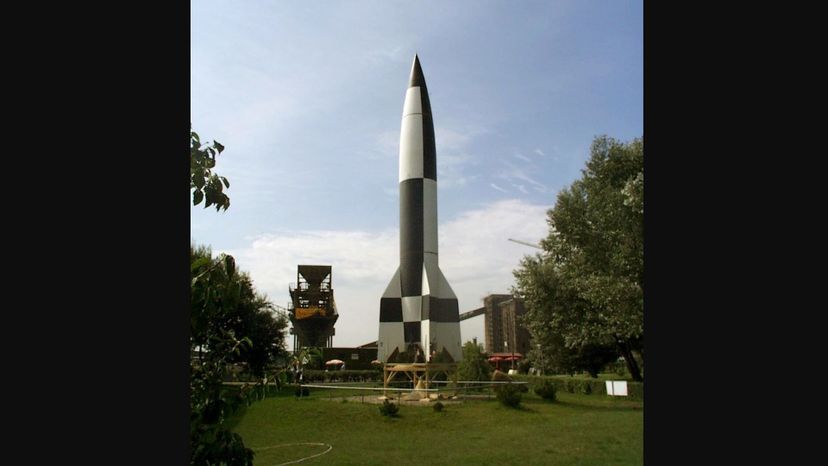
During WWII, Germany developed several “Vergeltungswaffen” or retaliatory weapons, one of which was the V-2 rocket. The V-2 goes down in history as the world’s first long-range guided ballistic missile and the first manmade object to achieve space travel – it did this during a test on June 20, 1944 when it managed to leave Earth’s atmosphere.
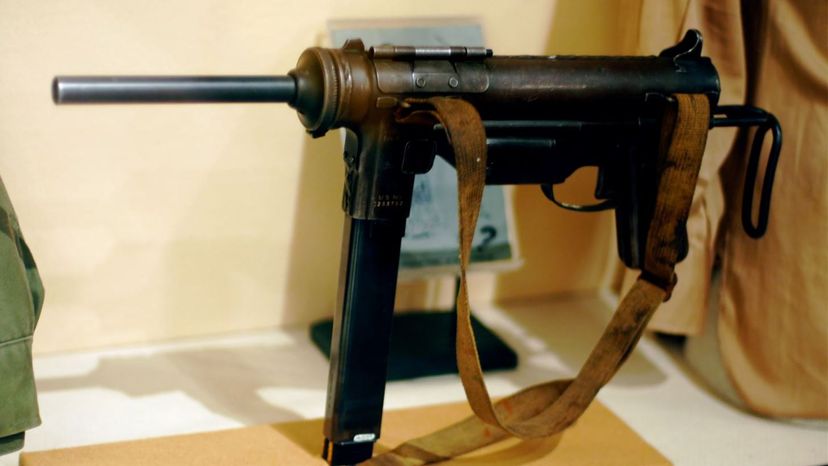
The M3 submachine gun is often referred to as the M3 SMG or by its nickname, “grease gun.” The US military began using it in December 1942 with the intention that it would replace the popular Thompson submachine gun (Tommy Gun). Production levels of the M3 SMG, however, never rose to meet demands.
Advertisement
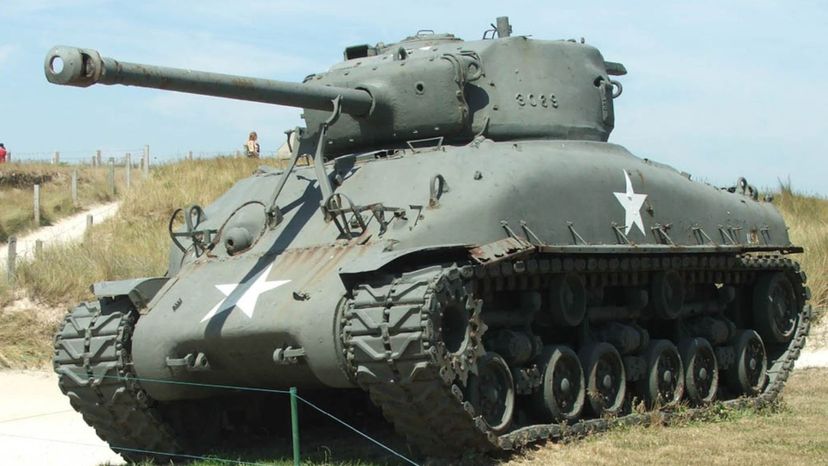
The United States produced an abundance of M4 Sherman medium tanks and began putting them into service in 1942. Due to the large numbers of Sherman tanks which were available, the US was able to distribute some to other Allied armies via the WWII Lend-Lease program.
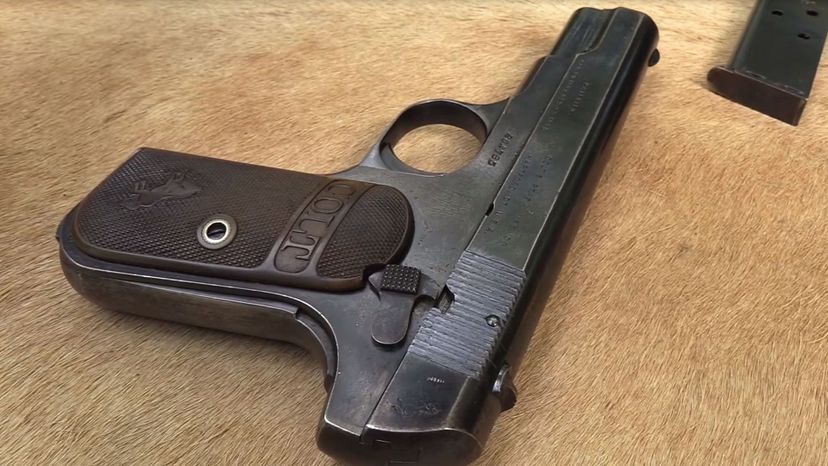
Production of the Colt M1903 pocket hammerless began in 1903 and lasted until 1945. It was issued to general officers in both the US Army and Air Force. Despite the term “hammerless” in its name, this semi-automatic pistol did, in fact, have a hammer out of sight under the slide.
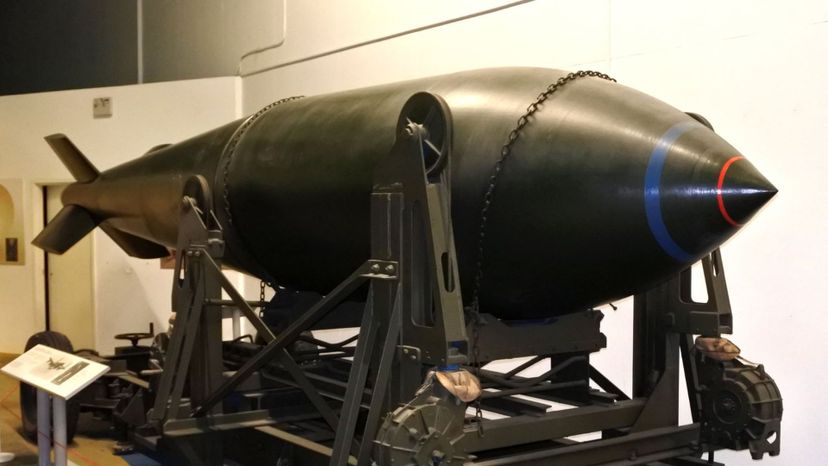
The Grand Slam earthquake bomb was almost twice as heavy as the Tallboy earthquake bomb which was also used during WWII. Grand Slam weighed 22,000 pounds or 10,000 kilograms which earned it the nickname “Ten ton Tess.” It was used successfully in several dam busting operations by the British RAF No. 617 Squadron (known as The Dambusters).
Advertisement
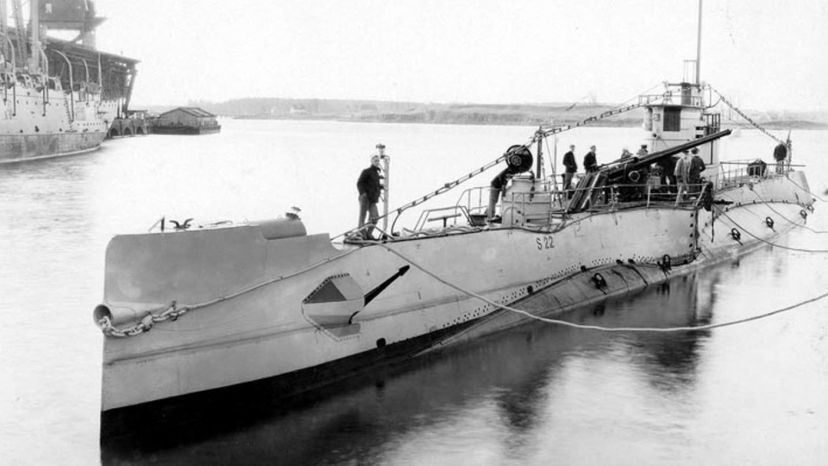
The term U-boat was used by Allied forces in reference to the submarines used by the German military in both WWI and WWII. The German word for submarine or undersea boat is “unterseeboot” and so the term U-boat should really apply to all submarines!
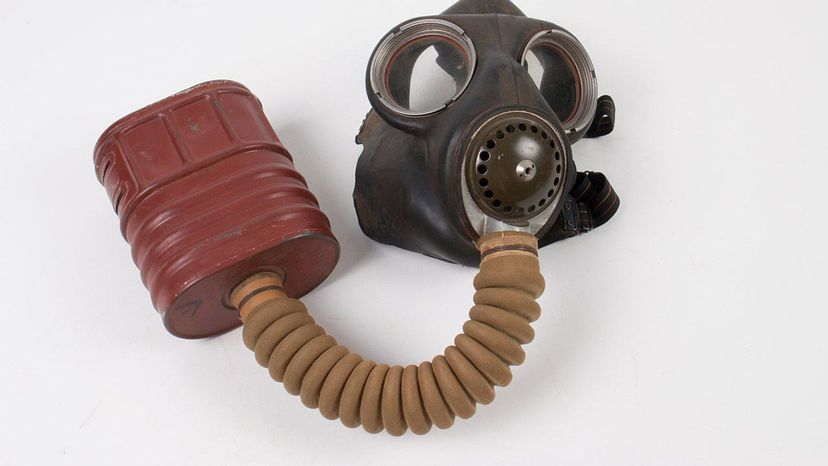
Both the M3 lightweight gas mask and the similar-looking M4 were introduced into service by the US military in 1942 as replacements for the M2. The M3 was either black or gray while the M4 was issued in olive drab (greenish brown).

The M2 man-portable backpack infantry flamethrower was an intimidating weapon for troops to have. It was used by US troops during WWII but became an unnecessary piece of equipment when flamethrower tanks were introduced.
Advertisement
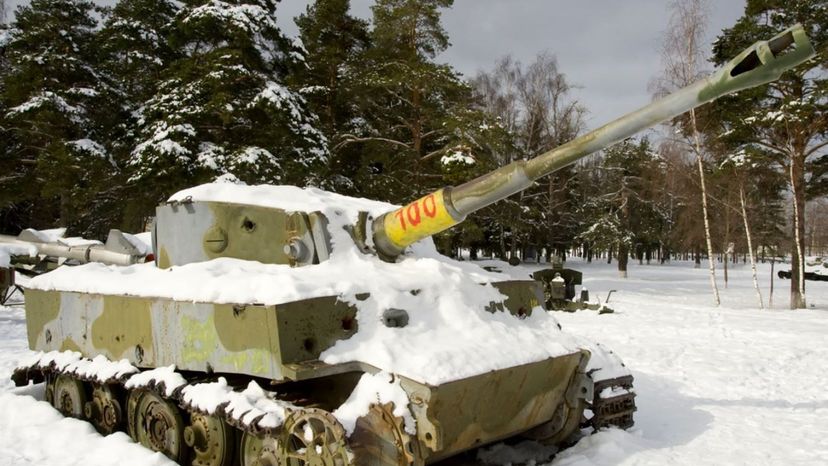
Germany brought the Tiger heavy tank into service in 1942 and it soon became a formidable presence on the battlefield. It was both heavily armed and armored, weighing over 50 tons, and having the ability to travel over 40 mph. Phasing out of the Tiger 1 began in 1944 when the upgraded Tiger II was deployed.
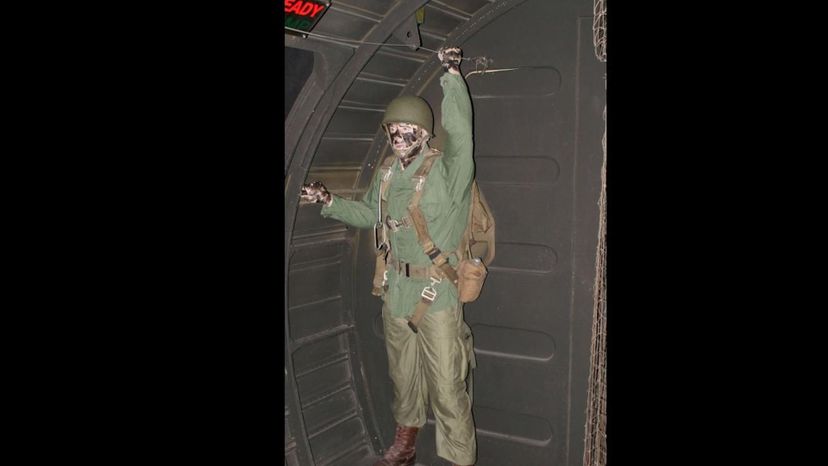
Paradummies were dropped by airborne troops as a way to distract and deceive the enemy on the ground. They look like real paratroopers and while they drew enemy fire, actual paratroopers could land safely elsewhere. They were called Oscar paradummies by American troops and Rupert dolls by British troops.
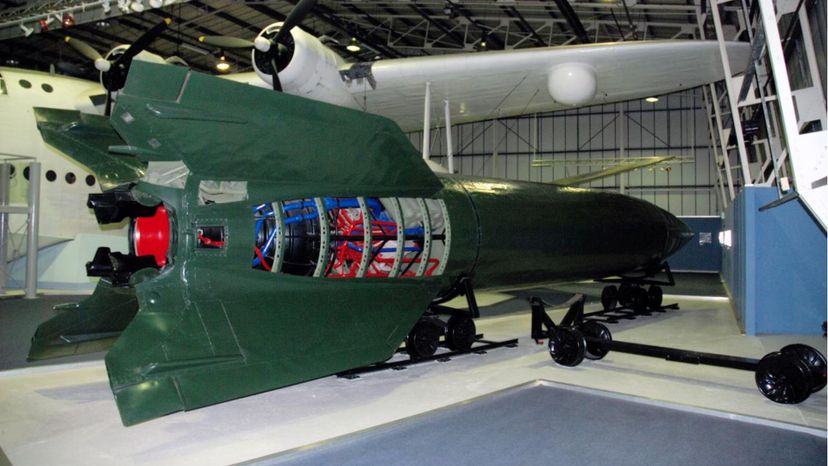
The V-1 flying bomb was one of the retaliatory or vengeance weapons developed by Germany during WWII. Between June and October, 1944, Germany launched almost 10,000 V-1 flying bombs at England from locations in France and the Netherlands.
Advertisement
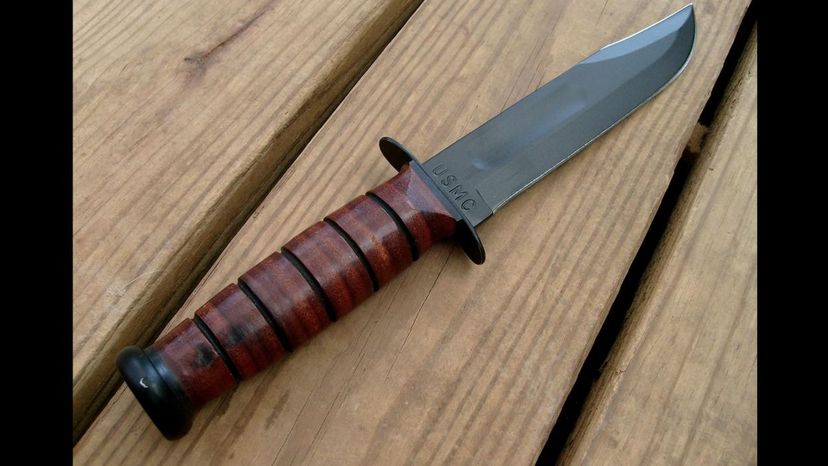
Both the United States Marine Corps and the United States Navy issued the Ka-Bar combat knife to troops during WWII. It served as a replacement to outdated knives which had been in use since WWI. The Ka-bar’s hilt was made of stacked washers and its blade was 7 inches long. It was designated a fighting/utility knife.
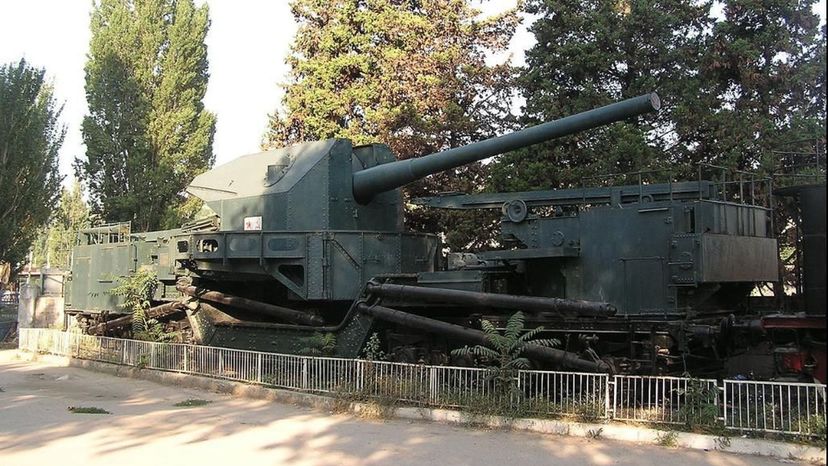
The railway gun was by no means a new weapon when WWII started – the first one had been used from as far back as the American Civil War. What set them apart in WWII was the sheer size of them. The incredibly enormous Schwerer Gustav railway gun fielded by Germany holds the distinction of being the war’s largest piece of artillery.
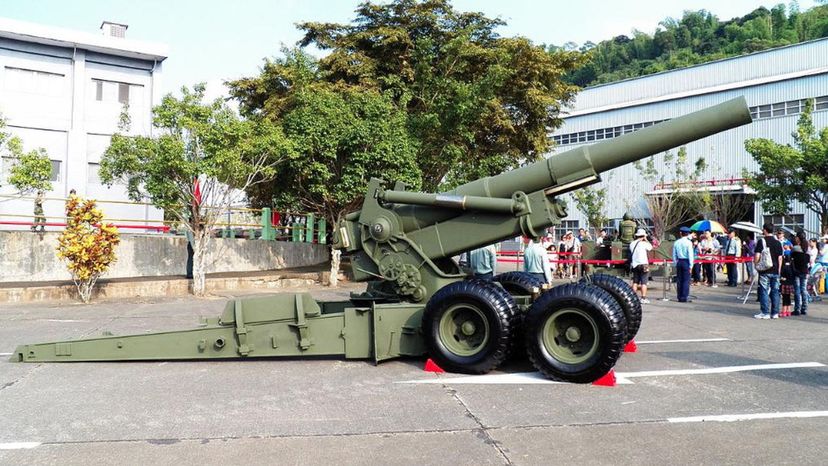
At roughly 36 feet and 16 tons, the towed M115 howitzer required a 14-man crew to operate it in the field. Designed in 1939, it was used in WWII and also saw action in both the Korean and Vietnam wars.
Advertisement
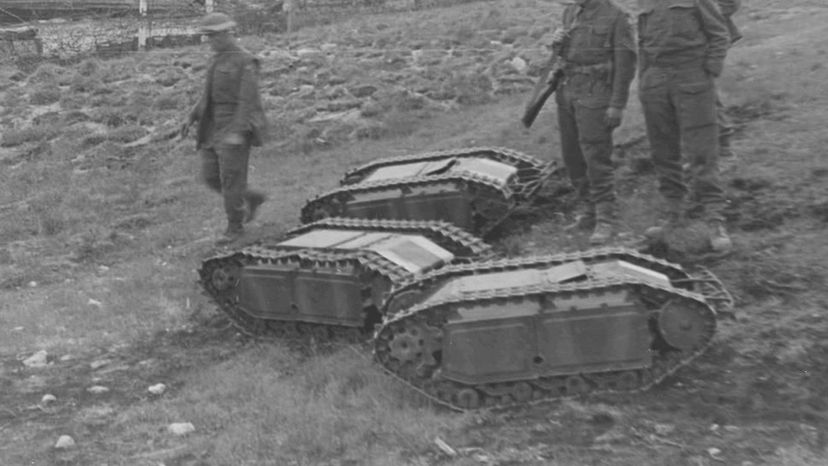
The Goliath tracked mine (also known as a beetle tank to the Allied troops) was a demolition vehicle produced by Germany in WWII. It was tethered, remote-controlled and weighed over 800 pounds. Over 12,000 were made during the war years, with some models being powered by a gas engine while others were electrical.
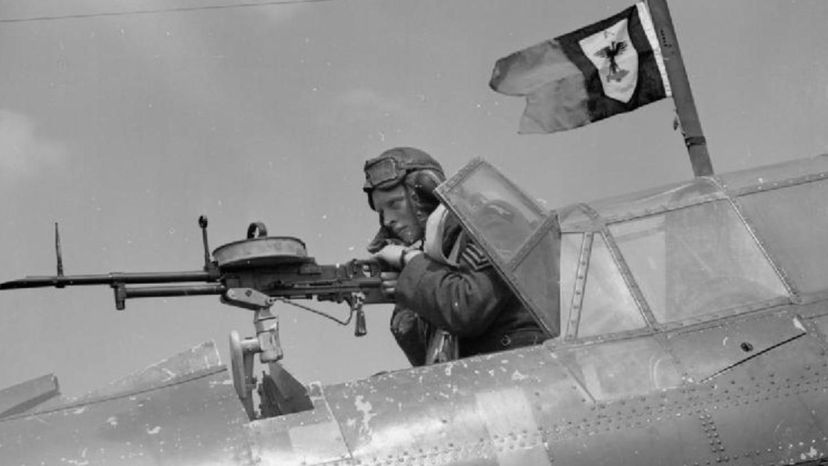
The Vickers K machine gun was used by both the British Royal Air Force and the Coastal Forces of the Royal Navy. It served as a rapid-fire weapon on some light and medium bomber aircraft, as well as some Motor Torpedo Boats (MTBs) and Motor Launches (MLs).
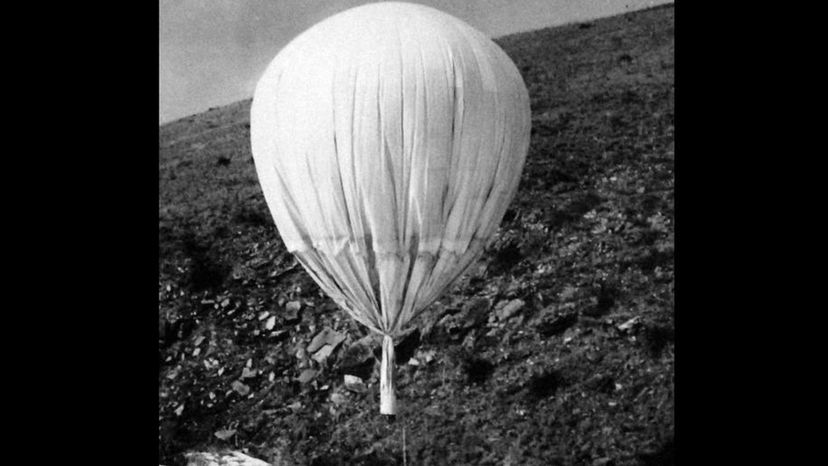
The Fu-Go devices were unmanned, explosive-laden, hydrogen balloons released from Japan with the aim of travelling over the Pacific Ocean to the west coast of North America. Between November, 1944 and April, 1945, over 9, 000 were released, but estimates say fewer than 300 made their target and only one resulted in fatality, Killing a pregnant woman and 5 children in May 1945.
Advertisement

Only two nuclear weapons have ever been used in the history of warfare: the Little Boy and Fat Man atomic bombs. Fat Man weighed 10,300 pounds and was dropped on the Japanese city of Nagasaki on August 9, 1945 – 3 days after Little Boy hit Hiroshima. Japan formally surrendered to the Allied forces 6 days later, on August 15.
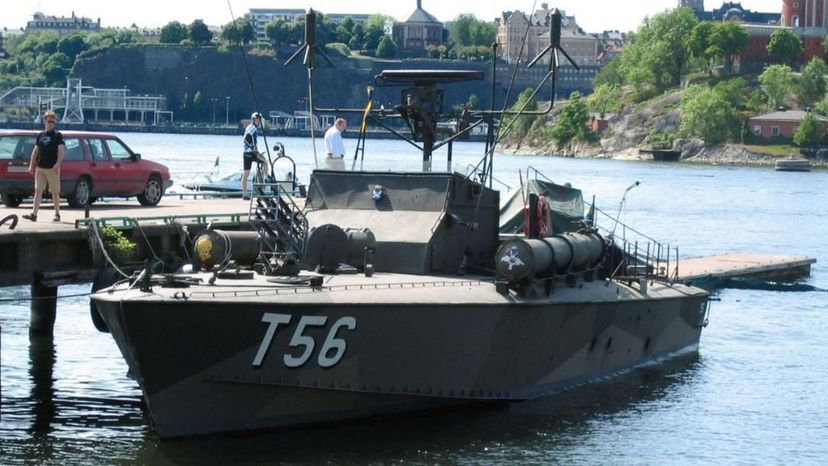
E-boats were fast attack German vessels developed by Germany during the interwar years (that is, between the end of WWI and the start of WWII). In German, they are known as Schnellboot (fast boat) or S-Boot. but the Allied armies used the designation E-boat, with the E standing for “enemy.”
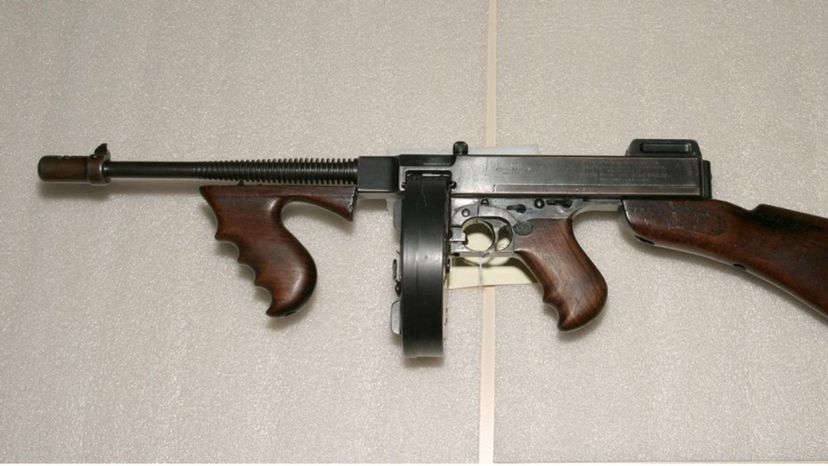
Gangsters during the U.S. Prohibition era of the 1920s had a special liking for the Thompson submachine gun. It took on a nobler image, however, when it became one of the most-liked weapons of troops during WWII. The stopping power of the Thompson meant that its low range of roughly 160 feet was not of any real concern.
Advertisement
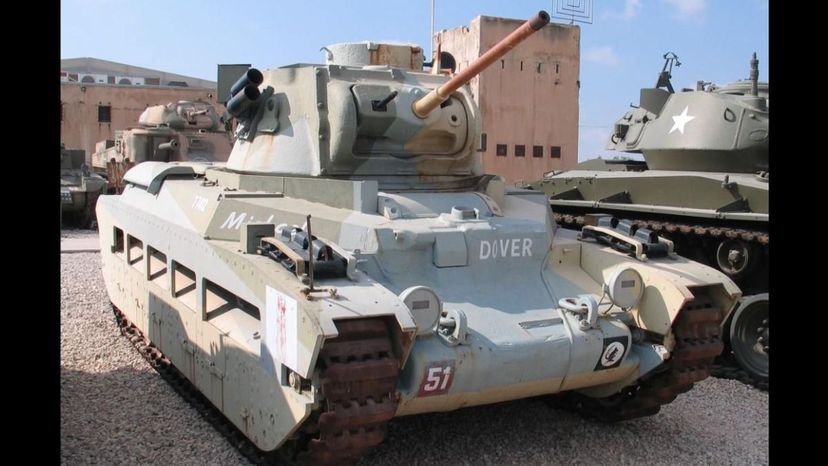
The Matilda infantry tank was utilized by the British throughout WWII. It carried a 4-man crew and although it was well-armored, the Matilda was also slow and lightly armed. Troops nicknamed it the Waltzing Matilda.
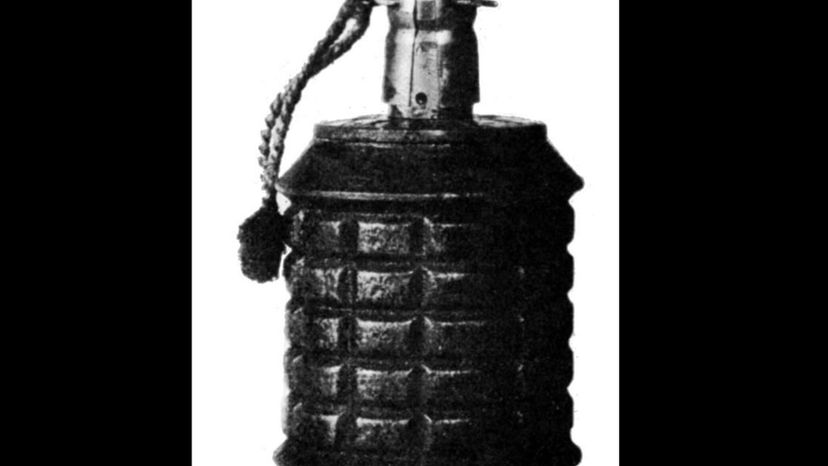
The Type 97 fragmentation hand grenade was used by both the Imperial Japanese Army and the Imperial Japanese Navy’s Special Landing Forces. It was activated by pulling out the safety pin and hitting the grenade against a hard surface. Care had to be taken, however, as its 2.3 ounces of TNT would detonate just 4 – 5 seconds after activation.
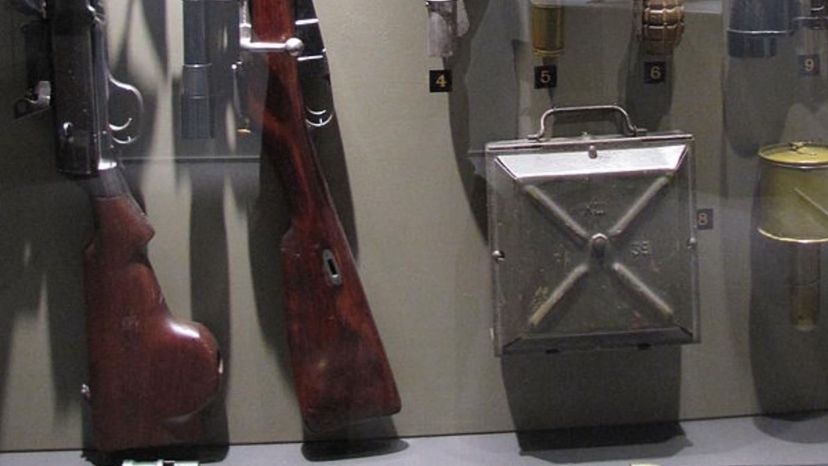
The weight of a vehicle, such as a tank, driving over the pressure plate of a Soviet-made TM-35 anti-tank mine was sufficient to trigger its detonation sequence. The mine contained 7-ounce blocks of TNT and usually incorporated some sort of anti-handling device to prevent anyone tampering with it.
Advertisement
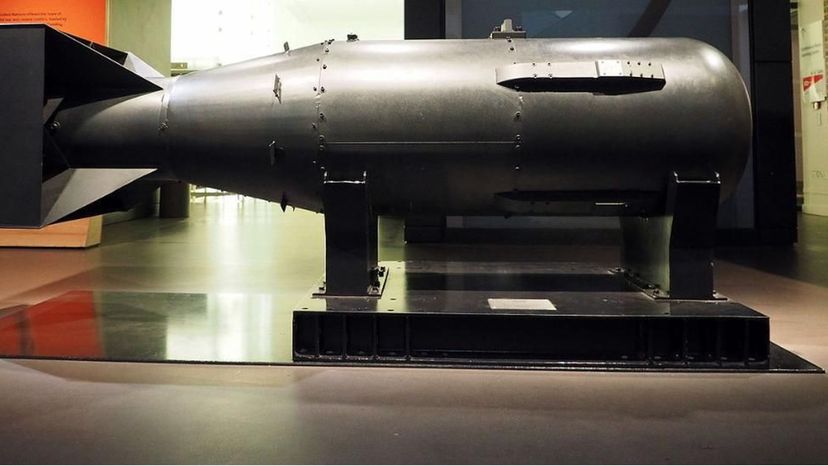
Little Boy was the first of two atomic bombs dropped on Japan in August 1945. It weighed 9,700 pounds and was released over the city of Hiroshima on August 6 by Enola Gay, a U.S. superfortress bomber. Japan surrendered on August 12, following a second atomic bombing (on Nagasaki on August 9 by a weapon code-named Fat Man).
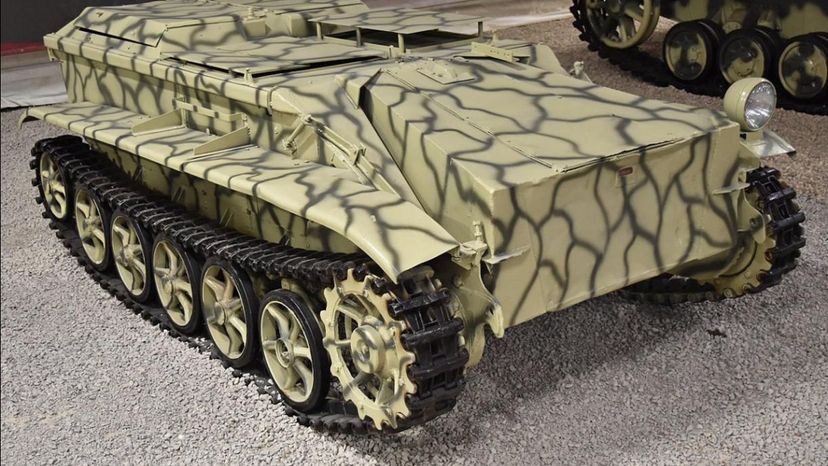
The Borgward IV, Springer and Goliath were 3 remote-controlled, charge-carrying vehicles produced by Germany during WWII. At nearly 4 tons, the Borgward was the heaviest of the three. It was protected by armor which was made as much as 20 mm thick in some places.
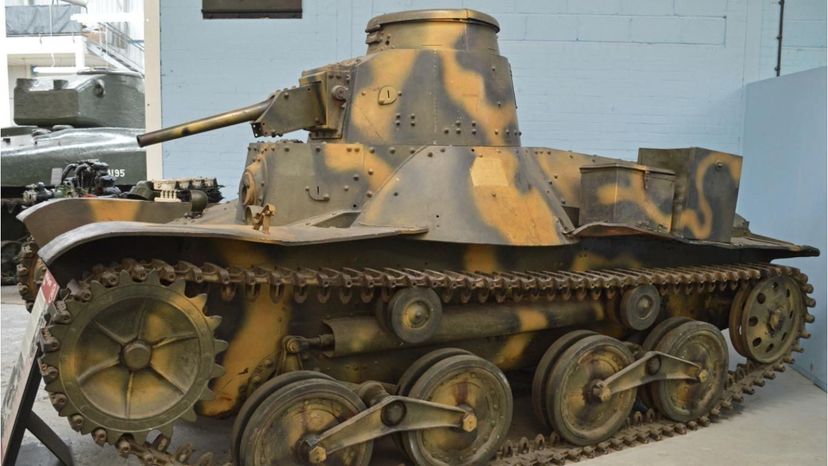
The Type 95 Ha-Go light tank was produced by Japan from 1936 until 1943. Some U.S. troops will remember it well, as it was the first enemy tank American forces faced during WWII. Being lightly armed and armored, the Type 95 Ha-Go did not prove to be much a match for medium and heavy tanks.
Advertisement
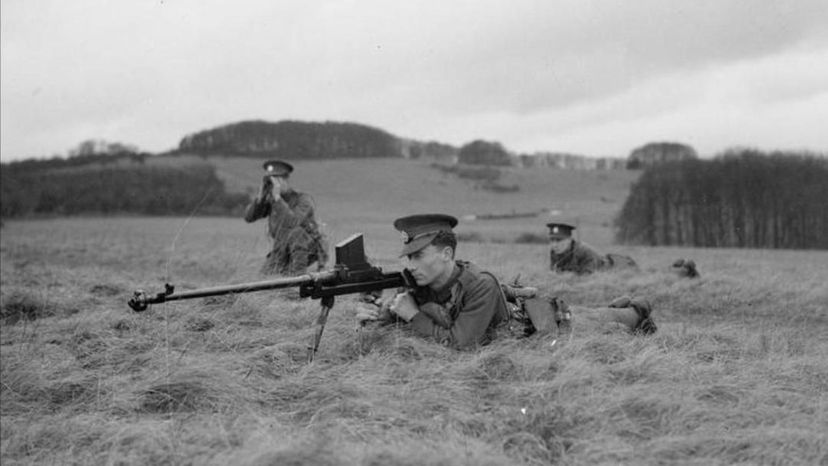
This bolt-action rifle was named for its creator Captain Henry C. Boys, a British weapons designer. Troops nicknamed it “elephant gun” because of its large size. It was initially quite effective at taking out enemy tanks, but these were upgraded with improved armor to withstand the assault from weapons like the elephant gun.
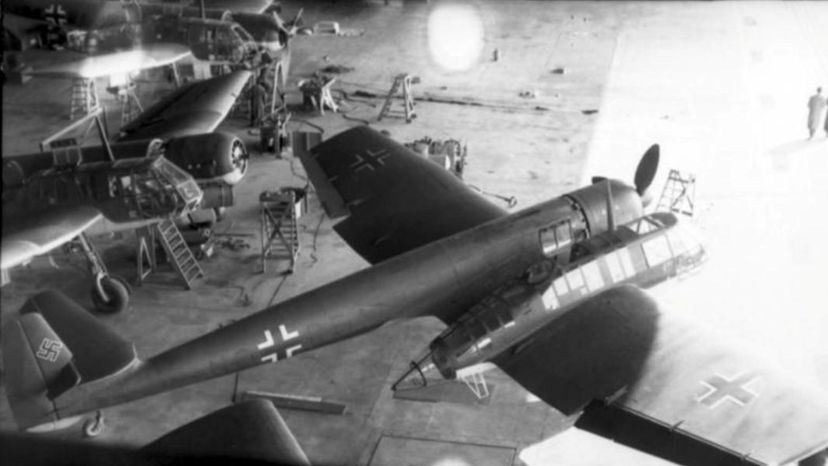
The unusual placement of the cockpit, along with the absence of a tailplane on the right-hand side, gave the Blohm & Voss BV 141 its “impossible to fly” look. Less than 30 of the asymmetrical Blohm & Voss BV 141 were ever produced and today, there are no surviving examples.
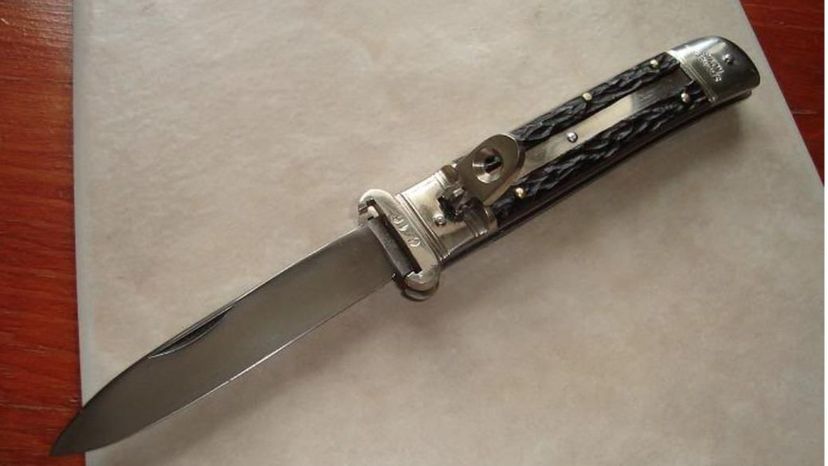
The M2 switchblade knife is often referred to as the paratrooper’s knife, because it was mainly issued to American paratroopers. Its switchblade design meant it could be opened easily with just one hand then used to quickly cut the paratrooper free of the harness of his parachute.
Advertisement
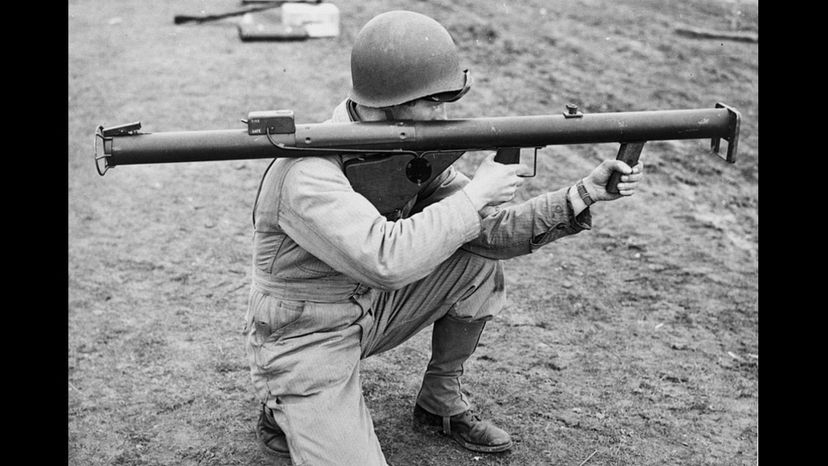
This reusable rocket launcher was introduced by the United States Army in 1942. It was later upgraded to the M20 Super Bazooka, which had more penetrating power being able to pierce 11 inches of armor plate, whereas the original bazooka could only handle 4.7 inches.
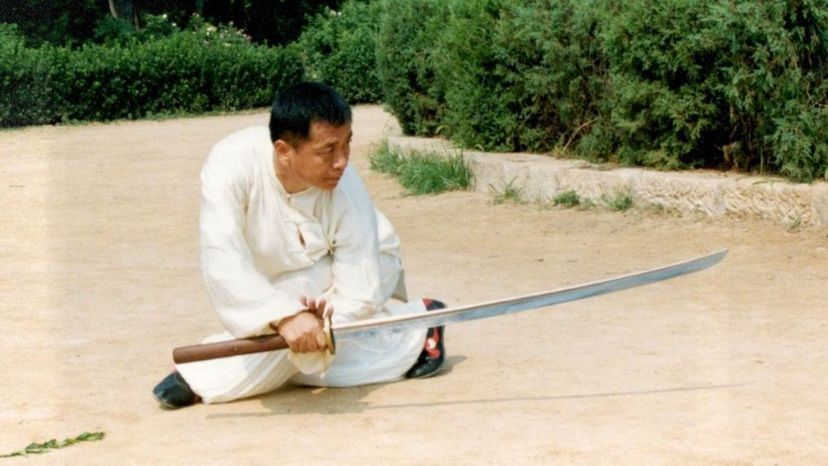
The miaodao saber, a traditional Chinese weapon, found a place in WWII due to the shortage of firearms experienced by some Japanese troops. With a blade which was normally made longer than 47 inches, the miaodao proved to be effective in close quarters combat.
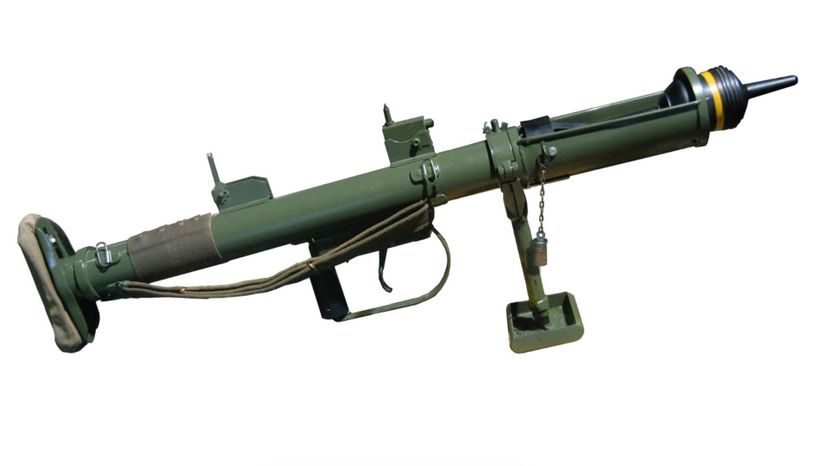
The British PIAT (Projector, Infantry, Anti-Tank) was a man-portable weapon introduced in 1942 to provide better firepower to troops who had been using the Boys anti-tank rifle. The new PIAT was capable of penetrating thicker tank armor than the Boys. Its downside, however, was that its effective range was only 115 yards.
Advertisement
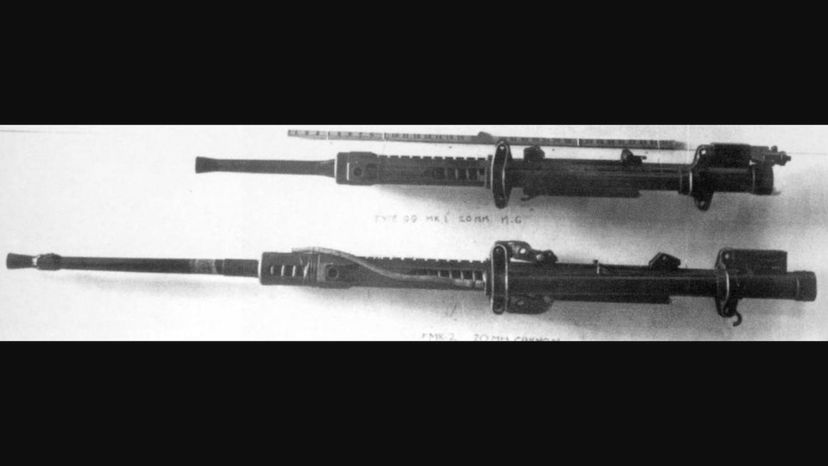
The Imperial Japanese Navy used the Type 99 Mark 2 aircraft autocannon to arm both the Mitsubishi A6M Zero and the Kawanishi N1K. Whereas an autocannon is normally a very heavy piece of equipment, the Type 99 was designed to be much lighter but suffered some loss of firepower.